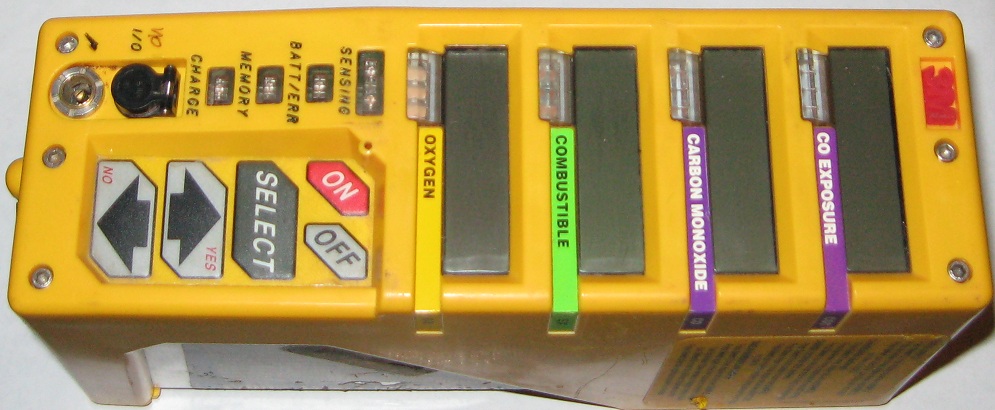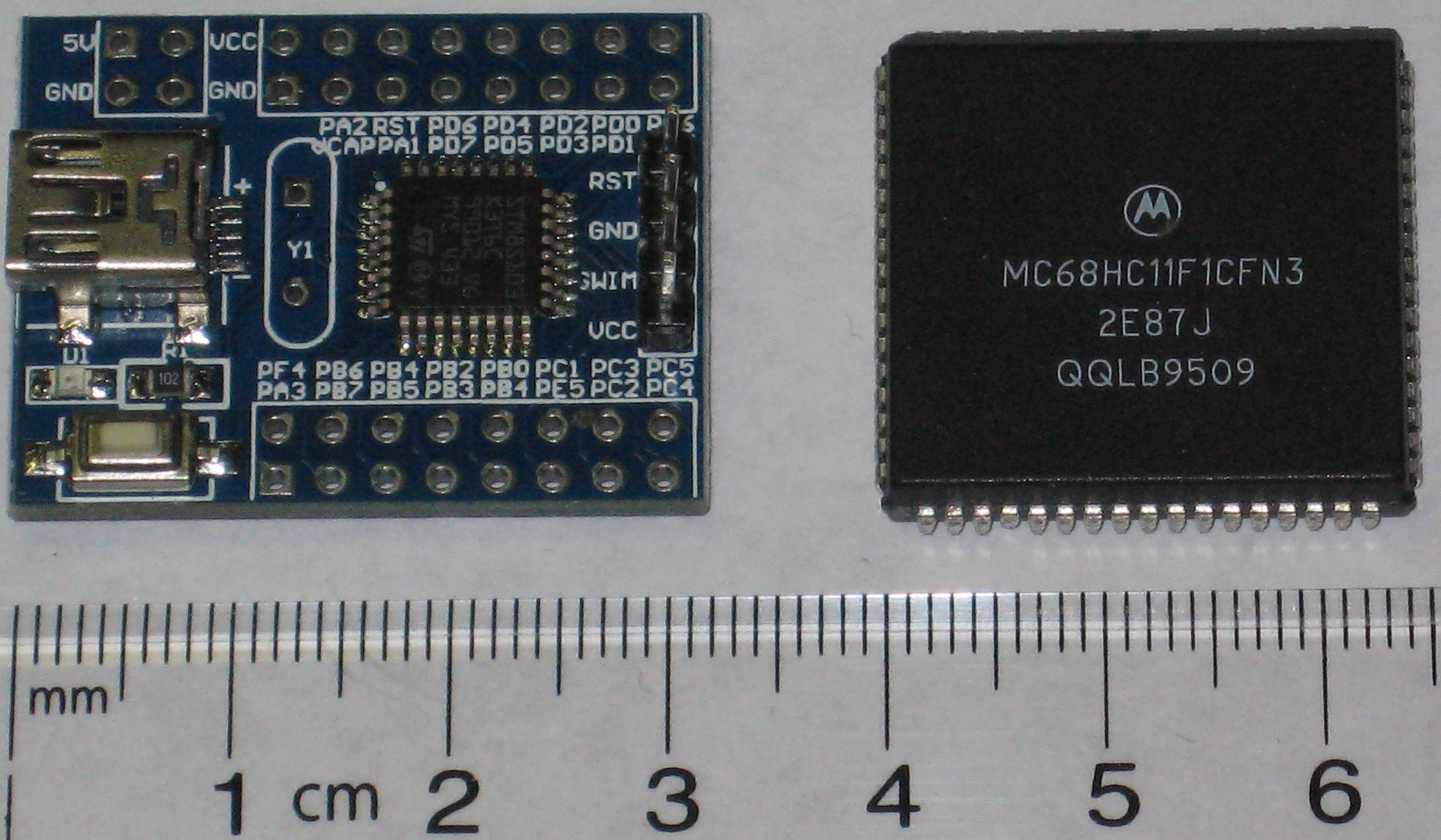|
|
|
 |
Microcontroller Choice
Most microcontroller chips require additional support chips to be useful. A working
package with added RAM, EEPROM and A/D chips is called a "single board computer"
and it's about the size of a pack of playing cards. That is too big to put into my
small chambers. What I need is a computer-on-a-chip and those are rare.
Five years ago I "inherited" about forty 68HC11F1s. These are marvellous devices
with on-chip RAM, EEPROM, A/Ds and a serial UART. Power them up and from the
serial port you can load up the EEPROM with a small monitor program that gives
access to all the on-chip memory and I/O ports via the serial pins. This is my a computer-on-a-chip.
For 15 years starting about 1990 the Motorola 68HC11s were used everywhere. They were very commmon
in automobiles running the engine injectors, instrument panels, and air-bags.
They were also in printers, scanners, appliances, and many industrial products, The
ones I got came out of 3M toxic gas sniffers.

Originally the chips sold for $25 each. I was not interested because I was certain I'd
fry a bunch...but the sniffer ones were free and worth a look.
The good, the bad, and the ugly truths:
[G] The chips were all in sockets (no need to blowtorch them off)
... and the first dozen I tested all worked.
[B] They were old: the fabrication dates ranged from 1992 to 1995.
[U] The 68HC11 EEPROM has a 10,000 rated cycle life
...and that's where 10 years of sample data was saved and resaved.
The other problem was the internet doesn't have a good memory for old things. Googling "68HC11" yields
lots of hits but the links on those pages often get 404s. Most sites are missing their software packages
and have scattered "link missing" icons where there used to be schematics and screen shots. It felt like an
archeological dig. I did manage to get a consistent set of tools and examples so you have a head start if
you are working with these chips. See 68HC11F1 Install if you want to
take a walk down Motorola memory lane in Java.
The 2015 replacement is an ARM core. I want small so I use the STM8S103 on a development board
($3.50 item #287246 from dx.com). As you can see the STM8 board is about the size of the 68HC11F1 chip
(notice the "fab date" of 9509...so September 1995):

| STM8S103 |
68HC11F1 |
| Package |
LQPF32 |
PLCC68 |
| Clock |
16.0Mhz |
4.0Mhz |
| RAM |
1024 |
1024 |
| EEPROM |
8196 |
512 |
| A/D |
6x10 bit |
8x 8 bit |
| A/D Rate |
8K/sec |
1M/sec |
| RxTx Baud |
4.8Kb |
1.0Mb |
The USBmini connector on the STM8S only powers the board...it does not provide a USB interface. Installation of the
bootloader on the STM8S requires you interface the PC to the 4 pin SWIM (Single Wire Interface Module) on the board.
This is the first task in the STM8S Install. Once that is done you can load a
"bootloader" (or write your own) to do remote control of the STM8 assets.
For the 68HC11 you will need to connect the RxTx (PD5 and PD6) pins to your PC. This is the
first task in the 68HC11F1 Install. Once that is done you can load a "talker"
(or write your own) to do remote control of the 68HC11F1 assets.
After getting the 68HC11F1 to work [one of those things I just had to do] I decided to use the STM8S for my
plasma chambers. I'm glad I investigated the old Motorola chip because I learned how to set up a
development/testing environment.
Most valuable thing I learned from the 68HC11 was how to build a "talker" in a minimalist situation. In STM world a
"talker" is called a "bootloader" and the while the two chips are separated by 20 years the concept and capabilities
are nearly identical.
The approach is very powerful: you build a tiny bit of intelligence in the microcontroller that gets you efficient
access to all its resources. You then build the next level in the application hierarchy into the PC where you have infinitely more
resources to handle the application complexities.
So you can now take the path to either the STM8S or 68HC11F1 pages.
|

